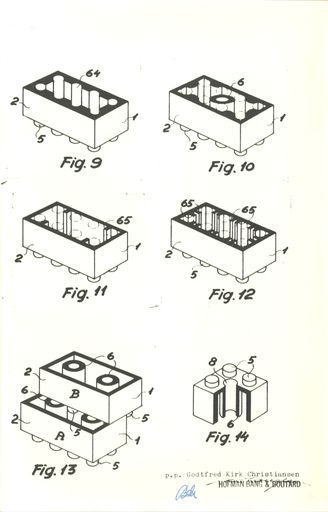The LEGO Group’s new campaign “Made to be played” highlights the versatility of the LEGO® brick and shows how it can be passed down through generations while maintaining its quality and inspiring creativity. The campaign highlights, among other things, some of the iconic LEGO sets of recent years, including the first LEGO castle from 1978, the Galaxy Explorer set from 1979 and the Black Seas Barracuda pirate ship from 1989.
Since their introduction in 1958, LEGO bricks have remained popular thanks to their unique design and compatible plug-in system. Developed 66 years ago, the LEGO Group has succeeded in creating a timeless toy with the LEGO brick that offers children and adults endless play possibilities. Thanks to its quality, it can be passed down from generation to generation and used again and again.
The LEGO Group refers to the property that LEGO bricks do not lose their strength when stacked as “adhesion strength”. The materials used must always meet the strictest safety, quality and durability standards and are manufactured with the highest level of precision Safety for children manufactured.
Without compromising on quality and safety, the LEGO Group is working to increase the share of sustainable raw materials in their bricks to achieve their goal of making LEGO products from renewable and recycled materials by 2032.
Annette Stube, Chief Sustainability Officer, says: “LEGO bricks are made to be played with over and over again – and our goal is for our fans to pass them on when they are no longer needed. The enduring value of LEGO bricks is inseparable Combined with our commitment to sustainability, we want to inspire endless creativity and prevent them from being thrown away unnecessarily. We not only encourage our fans to keep the stones in the game, but we also look for them additional opportunities to reuse these through our take-back initiatives.”
Earlier this year, the LEGO Group expanded its LEGO Replay take-back program in the UK, building on the successful launch of LEGO Replay in the US and Canada. In Germany and the USA, the LEGO Group is also testing other options to encourage even more people to trade in used LEGO bricks. With these pilot projects At the same time, the LEGO Group is gaining experience on how LEGO fans are willing to take part in such take-back programs.
Sustainable LEGO bricks
The company is continually making progress as part of its innovation process to make LEGO products more sustainable. This includes the increased use and introduction of more sustainable raw materials paper-based inner packagingwhile simultaneously reducing the carbon footprint in every step of the production process.
In 2023, 18 percent of the resin purchased was according to the Principles of mass balance certified, which corresponds to an estimated average value of 12 percent renewable sources for LEGO products. The LEGO Group plans to significantly increase this percentage in 2024 and beyond.
Towards more sustainable LEGO bricks and elements, the LEGO Group has tested more than 600 different materials. For example, bio-polyethylene (bio-PE), which is now used to make more than 200 different botanical elements and accessories for minifigures, or a new material called arMABS, which is made from recycled artificial marble, were successful. arMABS can already be found in over 500 different transparent LEGO elements such as lightsabers, windshields and windows.
The LEGO Group has other innovations planned, including the development of a material called ePOM that uses cutting-edge technology to mix renewable energy and CO2 from organic waste. The plan is for ePOM to be used for rigid LEGO elements such as wheel axles from 2025.
Shaping a sustainable future
The current campaign comes at a time when the LEGO Group is in… Sustainability initiatives leaves no stone unturned. The company has increased its spending on environmental initiatives by 60 percent in 2023 compared to 2022 and plans to double its annual spending by 2025 compared to 2023, supported by the company’s goal of increasing greenhouse gas emissions by 37 percent by 2032 compared to 2019 and achieve net zero emissions by 2050.
